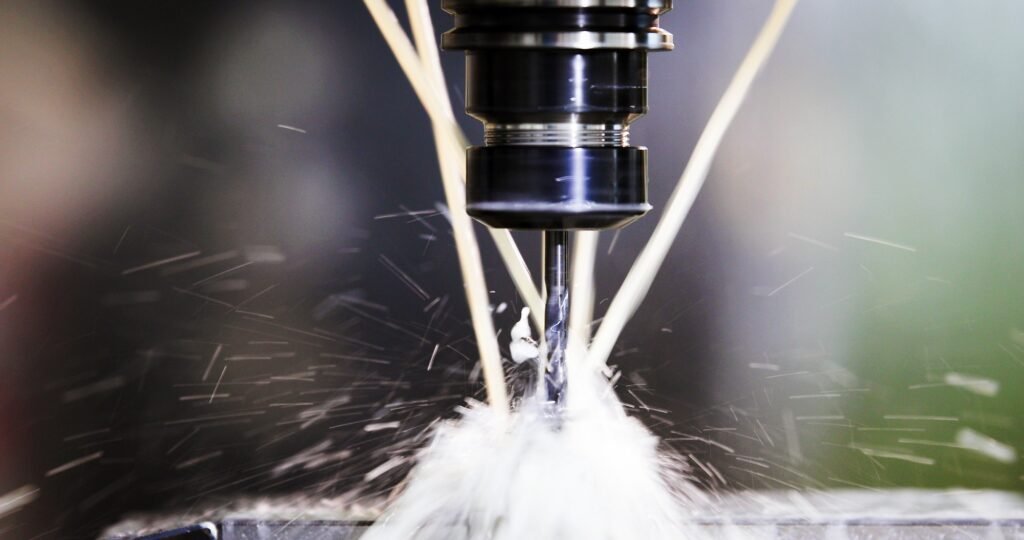The aerospace industry demands precision, reliability, and innovation. From aircraft engines to satellite components, aerospace parts must meet stringent standards for safety, performance, and durability. CNC machining plays a crucial role in achieving these requirements by enabling the production of complex, high-precision components. This article explores the importance of CNC machining in the aerospace industry and why it remains an essential manufacturing technology.
1. Why CNC Machining is Critical for Aerospace
- High Precision and Tight Tolerances
Aerospace components often require tolerances within microns. CNC machines offer unmatched accuracy and repeatability, ensuring parts meet exact specifications. - Complex Geometries
Components such as turbine blades, airframe structures, and engine housings have intricate shapes. Multi-axis CNC machines can produce these complex geometries with minimal setups. - Material Versatility
Aerospace applications use a variety of materials, including titanium, Inconel, aluminum, and composites. CNC machines are capable of handling these difficult-to-machine materials with specialized tooling and techniques. - Regulatory Compliance
The aerospace sector is governed by strict certifications (e.g., AS9100, ISO 9001). CNC machining offers process control and traceability essential for regulatory compliance.
2. Common Aerospace Parts Manufactured with CNC Machining
- Structural Components
Wing spars, fuselage frames, and landing gear components require high strength and precision, making CNC machining ideal for their production. - Engine Components
Turbine blades, compressor discs, and engine casings are machined from heat-resistant superalloys using advanced CNC processes. - Interior Components
Lightweight aluminum or composite parts for aircraft interiors, such as seating brackets and paneling, are produced with CNC machining for both strength and aesthetics. - Avionics Housings
Precision-machined enclosures protect sensitive electronic systems used in navigation, communication, and control. - Satellite and Spacecraft Parts
CNC machining is essential in manufacturing critical parts for satellites and spacecraft, where weight reduction and precision are paramount.
3. Advanced CNC Technologies in Aerospace
- 5-Axis CNC Machining
Allows for the production of highly complex aerospace parts in a single setup, reducing lead times and improving accuracy. - High-Speed Machining (HSM)
Enables faster material removal rates while maintaining surface finish quality, especially important for lightweight aerospace materials like aluminum. - Precision Grinding and EDM (Electrical Discharge Machining)
Used for extremely tight tolerance features and hard-to-reach areas. - Additive + Subtractive Hybrid Machining
Combining 3D printing with CNC machining to produce lightweight structures with optimized strength-to-weight ratios.
4. Challenges of Aerospace CNC Machining
- Material Machinability
Aerospace-grade materials like titanium and Inconel are difficult to machine, requiring specialized tooling and cutting strategies. - Heat Management
High-speed machining of metals generates significant heat, which can distort parts and reduce tool life. Advanced coolant systems are necessary. - Quality Assurance
Strict inspection processes, including Coordinate Measuring Machines (CMMs) and non-destructive testing (NDT), are essential to verify part conformity. - Cost Pressure
Aerospace parts are often low-volume but high-complexity, making production efficiency and waste reduction critical for cost control.
5. Benefits of CNC Machining for Aerospace Manufacturers
- Consistency and Repeatability
CNC machining ensures that every part produced meets exact specifications, essential for aerospace safety standards. - Flexibility in Prototyping and Production
CNC machines can quickly adapt to design changes, allowing for rapid prototyping and small-batch production runs. - Reduced Lead Times
Advanced CNC processes streamline manufacturing workflows, reducing overall production time without compromising quality. - Support for Lightweight Design
CNC machining enables the production of lightweight, optimized structures that improve fuel efficiency and performance.
Conclusion
CNC machining remains a cornerstone technology in the aerospace industry, enabling the production of highly precise, complex, and reliable components. As aerospace designs continue to push the limits of performance and innovation, CNC machining technologies will evolve alongside, providing manufacturers with the precision and flexibility needed to meet future challenges.


